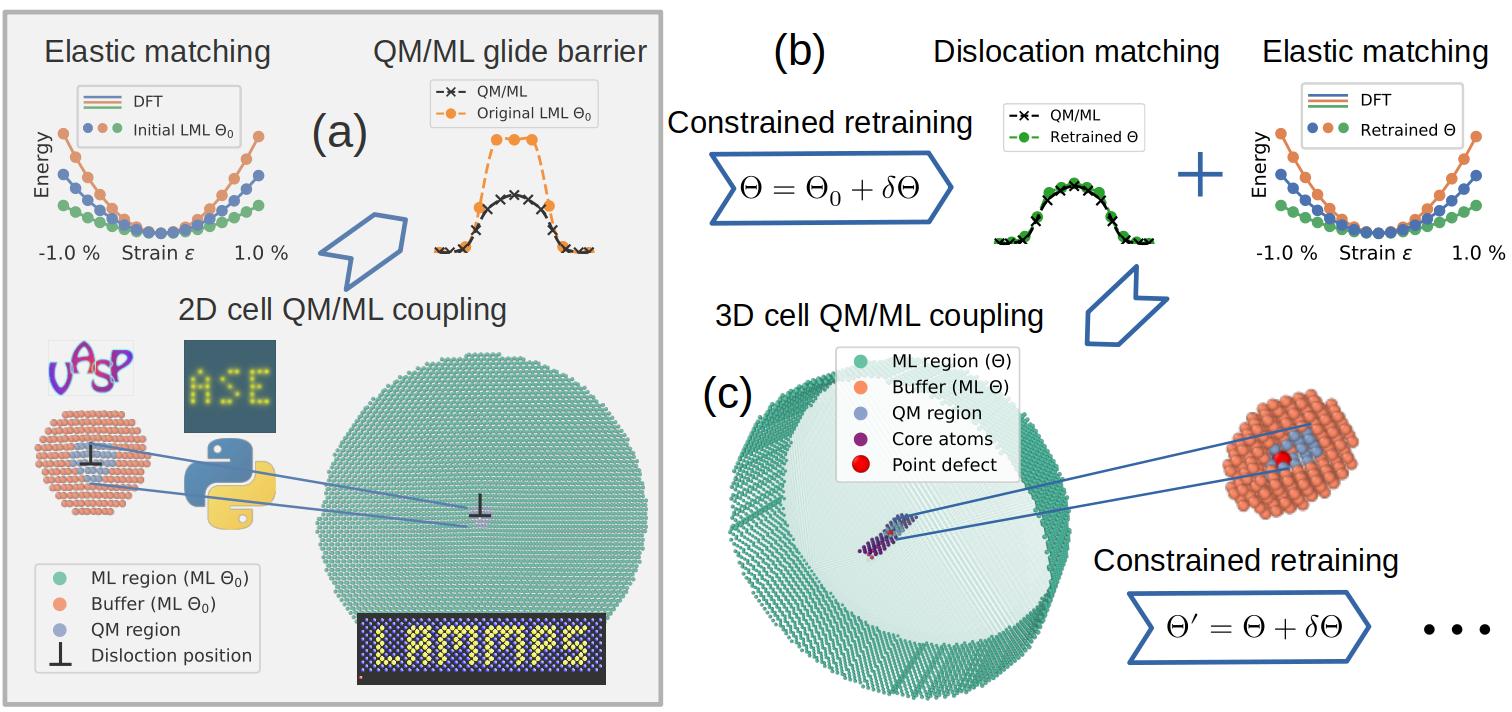QM/ML for ML
and ML for QM/ML
The previous project discussed the limitations ab initio methods when applied to study dislocations and how hybrid QM/MM methods can be used to overcome these limitations. The fact that there is a lack of ab initio data for dislocations means that these structures are absent in the training databases used for interatomic potential development. Thus, while using these force fields for large scale simulations of dislocations the user largely rely on the predictive power of the potential
This project explores how recent Machine Learning based force fields

Starting from a potential with correct elastic properties (\(\Theta_0\)), we evaluate properties of dislocations with standard QM/ML scheme (a). The resulting ab initio forces are then targeted in a novel retraining procedure, which exploits the linear parametric form to precisely match core structures whilst preserving elastic and other properties (b). Coupling to this retrained potential (\(\Theta\)) allows dislocations to cross the quantum/classical boundary of a spherical QM region centred on a point defect (c). The QM/ML data from three dimensional simulation can be used for another round of retraining allowing the systematic improvement of interatomic potentials (c). This approach opens a vast range of previously inaccessible defect structures to ab initio investigation. You can find more details about the approach as well as the results regarding dislocation-defect interaction in tungsten in our recent paper